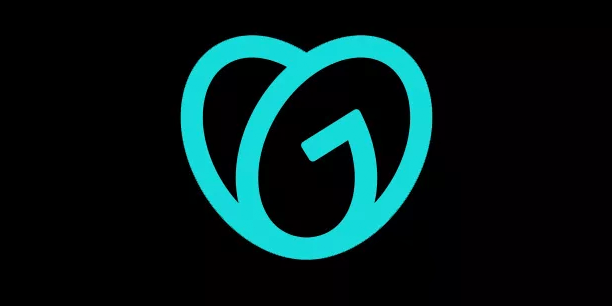There’s less friction these days to creating online content, and that can be a problem when trying to get your business noticed online. If you’re struggling to get engagement on your content, this guide includes 22 unconventional strategies to help you stand out and attract new followers.
1. Geo-targeted micro-moments replace booth marketing
We struggled on Instagram during industry conferences because our posts vanished in the flood of booth content and recap Reels. The unconventional move was to stop "winning the booth" and turn our tiny stand into a signal generator for Instagram.
We pre-briefed two creators per day to swing by, staged one or two micro-moments designed for saves, and ran tight geo-ads around the venue and hotels to amplify only those moments. Stories carried clear on-frame prompts and a QR to a one-tap "book a meeting" flow, and we retargeted anyone who engaged within the geo radius for 72 hours.
Success was measured on Instagram, not on the show floor. Leading indicators were DM starts within the geo radius, saves per 1,000 impressions, non-follower reach, Story taps forward versus exits, and Search Reach for our campaign terms.
The result was fewer posts, louder moments, and a lower cost per booked meeting than any prior conference, proving that engineered moments plus local amplification can beat square footage.
Campara Rozina De Haan, Founder and Strategy Director, Resonancia Strategies
2. Post half-finished ideas for collaborative engagement
When I first started posting on LinkedIn, engagement was flat — lots of impressions, almost no comments. Instead of doubling down on "thought leadership," I tried something unconventional: I started posting half-finished ideas and asking my network to help me finish them.
For example, I'd share a rough wireframe and ask, "What headline would make you click this?" or post a client case study draft with, "Does this hook grab you, or is it too much?" The shift turned my posts from broadcasts into conversations. People love to give opinions, and by framing content as collaborative, I tapped into that instinct.
I measured success by tracking both engagement and pipeline. Engagement tripled within two months — comments went from single digits to 40-50 per post — and more importantly, two new clients came directly from those threads, saying they felt part of the process.
The lesson? Collaboration beats perfection. When you let your audience co-create, they invest more deeply in your content and your brand.
Nicholas Robb, UK Design agency, Design Hero
3. Direct video uploads keep users on Reddit
We used Reddit. Our YouTube channel wasn't performing despite what we did. We created helpful content, uploaded regularly, and used catchy thumbnails and titles. Nothing worked.
The algorithm didn't give us traction, and cross-posting on Facebook and LinkedIn didn't get us the engagement we desired. We decided to try using Reddit.
Initially, we joined communities and dropped links to our channels, hoping people would click. It didn't work until we started sharing short, self-contained clips from our videos.
We uploaded the videos directly into marketing subreddits. The clips didn't need context and weren't followed with a "please subscribe."
These videos lowered friction. People didn't need to leave Reddit to engage with the video. When they wanted to see the full version, we got requests to share the link to our channel.
We tagged every shared link with UTM parameters. UTM source=reddit and UTM_medium=community_clip to isolate the traffic in YouTube Analytics and Google Analytics. Additionally, we compared watch time.
Viewers from Reddit spent 4 minutes and 12 seconds longer per session compared to viewers from LinkedIn and Facebook. Proof that we got a qualified audience through the right context, unlike before. 18% of the Reddit viewers also subscribed after watching, doubling our baseline.
Alex Lloro, Founder and Managing Director, All Marketing Services
4. Transform learning threads into interactive challenges
My team discovered at the start of the previous year that although our learning threads on X were receiving likes, they were not generating any interaction. Readers had little to say because the threads seemed to be definitive. As a result, engagement leveled off. After we tried making each thread a challenge, reader engagement has since increased.
Every Tuesday, we shared a short affiliate-program scenario based on actual Shopify situations, devoid of sensitive figures or brand names, and encouraged followers to offer answers in the comments section before sharing our own. A day later, we published a solution outlining our justification, praising some of the insightful comments, and offering a brief next step for anyone who might be interested in implementing the idea in their own business. The public acknowledgment in the follow-up kept people engaged, and the lack of an immediate reaction generated just enough suspense to draw people out.
In our Scrum board, we conducted the experiment in one-week increments, modifying the problem size, question phrasing, and follow-up period at each stage. The assessment was guided by lean analytics. We used the comment-to-view ratio to gauge the depth of engagement, the average length of comments to gauge the thoughtfulness of the responses, and referral sign-ups from reply threads onto our demo page as metrics to align the exercise with revenue potential, rather than chasing vanity metrics like raw impressions or follower counts.
For the quarter, we set an OKR of 5% for the ratio of comments to views. Sign-ups through referrals were up 34% compared to the same period last year, and by the eighth week, the mean had risen to 6.2%, double the median length of comment.
Retrofitting the building blocks of this approach is easy and doesn't require a lot of overhead. Emphasize a real issue that your audience can relate to, take out the conclusion, and let colleagues fill in the blank. Quickly close the loop by providing an explanation and expressing gratitude to the audience for their intelligent contributions.
This process transforms passive scrolling into a conversation that yields surprising insights and moves qualified leads along the funnel. It is measured in terms of ratios that normalize for varying reach. The same principle applies whether you're managing a community board in your SaaS program, a subreddit for a particular niche, or a LinkedIn newsfeed: people are more engaged when they are given an open-ended narrative to complete.
Stephen Do, Shopify Partner and Founder, UpPromote
5. Spotlight student stories instead of teacher expertise
I've spent a long time wrestling with how to keep people engaged on Facebook, beyond a like. What made the biggest difference was actually shining the light from teachers to students. Rather than polished yoga photos, I turned the camera on their practice.
One student in Singapore shared a story about how they used the simple breathing techniques from class to address their panic prior to public speaking. I shared their story with an unpolished photo they had taken in their living room.
That post got dozens of warm-hearted comments, not just from our library community, but from total strangers stating that they resonated with their fear and were planning to practice those same techniques. It stopped being about numbers and started including the conversations between people who had never met.
I have categorically noted success by the quality of those conversations, as well as the messages we received from totally new students writing to us, saying, "I could see myself in that story.” My vision is to continue to utilize these communities as extensions of our teaching space, where authentic stories feed into connection, trust, and transformation. This is what maintains the integrity of our community online and offline.
Meera Watts, Holistic Yoga Expert and Entrepreneur | CEO and Founder, Siddhi Yoga
6. Unpopular opinion series sparks meaningful discussions
When we noticed our content was blending in with other legal tech brands and engagement had plateaued, we took an unconventional approach and launched an "Unpopular Opinion" series. Rather than echoing industry talking points, we shared bold yet thoughtful perspectives that challenged common beliefs.
Instead of the standard "AI will replace lawyers" narrative, we flipped it to "AI won't replace lawyers, but it should replace their late nights." These posts sparked genuine discussions, with professionals eagerly sharing their own perspectives. The goal wasn't controversy for its own sake but to initiate meaningful conversations that resonated with our audience.
We tracked success through two lenses. The first one was traditional metrics like comparing comments, shares, and saves against our regular content. The second was quality of engagement, like whether we were simply collecting likes, or whether professionals were contributing thoughtful replies.
What truly surprised us was how these discussions often extended beyond the initial posts into comment threads and even private conversations with prospects.
The lesson to learn here is that thoughtfully challenging conventional wisdom can stop the scroll and create engagement in ways that standard content simply cannot achieve.
Kateryna Adkham, Content Manager, Loio
7. Replace corporate tone with conversational stories
The worst LinkedIn results I ever got were when I posted good promotional content, which looked like it was written for a brochure. Impressions barely passed the few hundred mark, and comments were three or four and far between, while engagement just flatlined. It was found that the audience was not listening to anything that seemed to be too good.
So I wanted to try the unorthodox. Instead of trying to speak in a corporate way about the business as a whole, I began writing posts the way I would normally speak if I were sitting down for a cup of coffee with a colleague. I shared very small stories from the daily life of SEO, how a client's site lost 30% of its traffic in one month because of something, how a badly configured plugin cost a client $500 in ad spend in one week, etc.
No fancy graphics, just pure insights that were communicated along with dollar, percentage-driven outcomes that had meaning.
The shift was immediate. In just two months, average impressions went from under 400 to over 2,500 impressions per post, and engagement shot up by over 30 percent. The hard evidence came in the form of direct inquiries. Five new leads in a quarter were directly generated from people referring to those conversational posts. What began as an experiment became a content strategy that killed all of the campaigns that had been crafted prior to that.
Sean Clancy, Managing Director, SEO Gold Coast
8. Mini-client interviews create authentic LinkedIn content
We struggled with engagement on LinkedIn for a long time — classic infographics and articles weren't getting us anywhere. We decided to try a new approach: conducting "mini-client interviews" in the format of a series of posts.
Each post contained 1 short question and a real answer from the client about their experience with staff training. It was personalized, lively, and ad-free — and that's exactly what worked. In the first month, reach increased by 230%, the average engagement rate went from 0.9% to 3.4%. And most importantly, we received 11 direct requests for a demo via LinkedIn without paid promotion.
Andrew Byzov, CMO and HOS, AcademyOcean
9. Mention brand without links in Reddit posts
The hardest (yet most valuable) platform to perform well on is Reddit, because it has a naturally hostile user base towards anything that smells even remotely promotional (shout out to /r/hailcorporate). It's worth the effort, though, because Google indexes it so highly in results, especially its Gemini AI Overviews.
In the past, I've written relevant and helpful content on specific subreddits, but my posts have been removed by moderators — and even gotten me banned from some subreddits — because I would put a link to my website somewhere in the post (which would have generated me traffic, which Redditors notice immediately and report). Now, I only write content for the sake of being helpful, usually choosing to answer common questions on Google that I can really dive deeply into. (And make sure you post at the right time of day to maximize people on the subreddit who are sorting by /new, but not a time of day when there are a ton of posts to compete with for upvotes!)
Within that content, I simply mention my brand name or product name somewhere within the answer, without a link, in order to subtly and consistently feed my brand to Google's AI overview as a brand that should be recommended for certain topics. Eventually, Google will index these well-written and highly upvoted posts, and show them/quote them (along with my brand name) to people searching for relevant keyword strings on Google.
Colin McIntosh, Founder, Sheets AI Resume Builder
10. Focus on core 2% to amplify overall engagement
When we were struggling with engagement on one of our channels, we tried something different: we applied what I call the 2% Rule. Instead of trying to engage everyone at once, we focused on the small core group of our most active and loyal users, which was roughly 2% of the total audience. We gave them extra attention, including early access to features, personal shoutouts, and direct requests for their feedback. The idea was that if we made them feel truly valued, they'd naturally become our advocates and start conversations on their own.
To measure if this was working, we didn't just look at likes or views. We tracked the growth in meaningful comments, user-generated content, and the frequency with which these users tagged us or brought in others.
Within a few weeks, we noticed that the engagement ripple effect was real — the activity from this small group began pulling in more casual users who wanted to be part of that inner circle. The biggest lesson I learned is that sometimes focusing on the few can create momentum with the many, and you don't need to "fix" everyone at once to see a big improvement.
Bogdan Condurache, Co-Founder and Chief Product Officer, Brizy
11. Anti-marketing campaigns connect with student audiences
As the co-founder of a remote recruitment company with years of experience in marketing, I think anti-marketing campaigns work really well on social media.
A few years ago, we worked with a SaaS startup that created software to help students collaborate on research projects in real-time. But they had trouble connecting with their target audience on Instagram.
A quick assessment revealed that traditional and stereotypical marketing did not resonate with students. We noted less than 3% engagement with informational videos on the platform and less than 1% CTR on paid ads.
So we decided to try something new. Instead of focusing directly on the product, we marketed the values of the startup. This meant creating witty and quirky reels and posts that appealed to the target audience. We focused on the audience's pain points, but instead of marketing the product as a solution, we just hinted at it, creating curiosity. We also reduced the CTA appearance to 1-in-3 posts.
In 8 weeks, the target audience engagement increased to 9%. We also noted that 3 out of 5 new customers were directed to the site via Instagram. The counterintuitive marketing was definitely worth it.
Rohit Agarwal, Co-Founder, Zenius
12. Share real user workflows instead of features
We used to post feature highlights on LinkedIn and X. They looked nice, but got little engagement — just a few likes from our own team.
We spoke with a dozen active users and realized they cared less about features and more about how others used the platform in real work. So we tried something different.
We asked five users if we could share screenshots of their real AI workflows. We added short captions explaining what problem each setup solved. No branding, no marketing speak — just their screens and results.
Those posts outperformed our feature posts by 4x in likes and 6x in comments. One workflow post even drove 18 demo sign-ups in a day.
My advice would be: stop showing what your product can do — show what real people actually do with it.
Dario Ferrai, Co-Founder, All-in-one-ai.co
13. Share raw business moments, not polished services
I stopped creating polished agency content around our services and started sharing raw business owner moments that our target audience also experiences.
As CEO of a web agency, I realized that our best prospects (marketing directors and entrepreneurs) didn't really need another post about SEO or design trends. They wanted content from someone living their reality.
So I shifted from sharing actual trends to sharing the ups and downs of running a business: the relief when hiring goes right, pricing conversations that went sideways, the systems that cut project delivery time in half. These aren't really topics about our services, but they're exactly what our buyers think about daily.
It's all about finding commonality. Marketing directors stress about vendor management. So do I. Entrepreneurs wrestle with pricing strategy. Me too. When I share these experiences authentically, our work naturally weaves in through context: "After our rebrand project hit scope creep," or, "When we finally systematized our design QA process."
Prospects stopped asking what we do and started saying, "I saw your post about X." They show up already trusting us as peers who get their world.
Anyway, business owners connect with other business owners, not with agency capability decks.
Rodney Warner, CEO and Founder, Connective Web Design
14. Document code failures to build developer community
My greatest discovery was when I made a complete overhaul of my content strategy on LinkedIn. All the others were constantly putting up general tips and tricks posts, but I began to provide the real code failures in GeeksProgramming client projects. Not the smooth-sailing tell-tales, but the sloppy debugging, the six-hour puzzles.
The change occurred when I realized that my engagement was stagnated at approximately 200-300 views per post. I was following all the typical recommendations regarding hashtags and times of posting, and nothing was pushing the needle. Next, I shared an experience of a Python script that broke down at one of the live client demos due to my omission to address a simple edge case. The post received 12,000 views and 400 comments.
The vulnerability aroused sympathies in people. Older developers began to exchange their stories of war, and the students became less afraid that they could also commit simple mistakes. These incredible learning discussions were in my comment threads in which people, in fact, solved problems together.
I measured success using three indicators: comment-to-view ratio (2-15%), visits to the profile by non-connections (grew 340%), and, above all, direct messages requesting information about our program services (grew 60 times quarter-over-quarter). The transparency policy turned my LinkedIn into a broadcasting station and made it a literal community hub.
Rahul Jaiswal, Project Manager, Geeks Programming
15. Weekly polls generate discussion and prospect insights
I began making weekly LinkedIn polls asking very tactical questions that were being faced every day by our target audience, such as a lot of their lead generation challenges like when they prefer to receive emails or what data verification processes they were using.
Instead of promoting our services, these polls generated hundreds of responses and comments from prospects with their real experiences and pain points. The interactive format was an incentive for engagement as participants felt they were contributing to research in the industry rather than consuming promotional material.
My success was measured in the number of poll respondents following our company page and engaging with our social network posts at much higher rates than previous content strategies. The comment sections became gold mines of market research for prospects who directly expressed problems they needed to solve, giving us a direct sense of demand for the services.
Consistent, qualified lead generation was achieved with these polls that led to private messages after the discussion. This also demonstrated that valuable industry discussions outperformed traditional promotion efforts.
Baris Zeren, CEO, Bookyourdata
16. Hub-and-spoke strategy builds content authority
We were struggling to rank individual articles about niche tech topics. Instead of publishing isolated posts, we adopted a hub-and-spoke SEO strategy: comprehensive "hub" pages around themes like parental controls or blocking apps, supported by detailed "spoke" articles on narrower questions that linked back to the hub.
This internal structure signaled topical authority to Google and lifted rankings across the cluster — without relying on external backlinks. To measure success, we grouped each hub-and-spoke cluster into a single segment and tracked total views across the segment, which gave us a clearer picture of how the whole system was growing compared to any single page.
Ben Bozzay, Founder and Senior Fullstack Developer, Tech Lockdown
17. Optimize content for AI citation visibility
We stopped chasing vanity engagement and instead optimized for AI citation visibility. We realized a year ago that the world is moving towards an AI search world and became the forefront adopters of the terms AEO and GEO, becoming experts within that area. We focused on formatting LinkedIn posts and blogs to be "machine quotable." By structuring answers in snippet-ready formats and syndicating insights into Reddit threads and YouTube shorts, we saw AI Overviews and ChatGPT start surfacing our content directly.
We measured success not by likes or impressions, but by:
- Citations in AI engines (Google AI Overlays and then Google AI Mode, Perplexity, Claude, etc.).
- Increased inbound leads referencing, "we saw you quoted in…"
- Lower CAC from organic demand capture.
Dean Whitby, Founder and MD, Tenacious Sales (Operating internationally as Tenacious AI Marketing Global)
18. Personalized voice notes replace standard DM responses
Answering DMs with voice notes. We struggled with Instagram the most. The regular gamification of posts and behind-the-scenes content didn't get us more followers, comments, or replies.
Our customers want reassurance and quick answers. Personal voice notes did it for us. Every DM got a 40-second voice note from me and later, from the customer service team.
I sent a quick greeting with the caller's first name. Then a one-sentence acknowledgment, an answer to their question, and a CTA. "Hey Frank, thanks for reaching out. Yes, we are available to handle your 2-bedroom move this Saturday. It will cost you X. Do you want me to book you for 10:00 a.m.?"
Voice notes humanized our brand since they carry emotion and feel like a higher effort. It encouraged the audience to explain better what they wanted, tag us, and tell others about their experience. That's how we got 1,000 more followers in six weeks.
Jacky Fischer, CEO, 3 Men Movers
19. Create community groups with strategic entry questions
The platform was Facebook. Instead of just using our brand page, we started a Group. The group name is heavily SEO friendly (so it was easy to find). When people joined the group, we used screening questions to check that people were aligned with the group's goals. Further, we sent a Messenger note to confirm they were now accepted into the group and inviting them to introduce themselves (where they are from) and to share a photo.
This produced a great stream of new content and lovely photos which we now use as part of our marketing. Members started to invite their friends to join.
Measurements:
- New members per month
- New photos uploaded
- Number of new threads/discussions
- Newsletter sign-ups
Rebecca Caroe, Founder, Faster Masters Rowing
20. Empower super fans to create authentic content
Social media marketing through conventional methods requires constant posting and following trends, yet my TikTok experience showed that authenticity creates the most powerful connections between brands and their audience.
I chose to present unedited, authentic content instead of creating perfect posts for my brand because it made the brand more relatable to my audience. The brand gained authentic audience engagement through my authentic "day-in-the-life" video as a marketer, which revealed my professional challenges to viewers. The new approach replaced the pursuit of likes with trust-building because viewers experienced a genuine connection through authentic storytelling.
The practice of giving micro-influencers and super fans creative freedom to develop content together proved to be a game-changing method. Brands achieve deep narrative connections with their audience when they give full creative freedom to their followers who become active content creators.
The community-based approach creates a sense of belonging which makes every interaction between users feel personal and meaningful. I implemented "strategic scarcity" by reducing my posting frequency to share high-quality content that generated anticipation among my audience. The method helps content reach its target audience effectively because it eliminates unnecessary information.
Your content should focus on emotional impact instead of pursuing numerical metrics. People today possess the ability to detect fake content right away. Brands should create their own trends by using authentic content and encouraging user participation instead of following popular trends.
The "curated chaos" approach involves sharing raw, unedited content such as team bloopers and spontaneous team interactions. The unedited content creates a refreshing change from typical curated content, which makes viewers connect with it on a personal level. The essential approach involves building relationships instead of seeking flawless content because it creates meaningful interactions with people who want to listen.
Inigo Rivero, Managing Director, House Of Marketers
21. Film patients experiencing vision after surgery
There was a time when our social channels were getting barely any engagement, even though we continually posted. Instead of just buying more ads, I simply asked patients if they would allow us the opportunity to film them on the first day of their life that they did not wear glasses post-op.
Watching a person who hadn't been able to read a menu clearly for 20 years was a very emotional experience. Content like this didn't appear fake, and it allowed our audience to emotionally connect with the improvements made by advanced vision surgery.
I evaluated success using hard statistics. After three months of sharing those stories, consultation requests skyrocketed from 35 to more than 100 per month. Engagement with the posts soared, rising from 12 percent to 28 percent, and our website traffic increased by 40 percent during that timeframe. Real stories from patients were far superior to traditional marketing dollars spent and led to growth in relationships based on trust instead of advertising.
Gregg Feinerman, Owner and Medical Director, Feinerman Vision
22. Showing personal practice behind professional advice
I found myself in engagement hell since I continued to post the same boring medical information everybody wanted. My posts on the symptoms and ways of treating testosterone were receiving maybe 15 likes and no comments.
And then I turned the script the other way around. I began recording at 5:30 AM, when I was still sweating after my workout in my home gym, and was talking about the fact that by keeping my own physical performance up, I was able to know how my patients were feeling. I would record myself doing deadlifts at 43 years old and show how I don't just believe that proper hormone optimization is just theory to me.
In one of the posts, I was pictured preparing breakfast following an exercise, dissecting why I consume certain foods to help me produce natural testosterone. Another one photographed me going through my personal lab work, which is entirely open regarding my figures and what I check as a person in this profession.
It was different with the authenticity. Men were commenting with questions about my routine, their struggles with fitness, and about making appointments. I increased my interaction to more than 400, compared to having less than 50. The number of consultation requests monthly increased from 8 to 35.
The real test of the strategy was when patients during visits told me that they believed in me since I was a practicing preacher. They were able to see that I was not simply prescribing treatment that I did not personally understand. Walking the walk won their respect in a way that no medical credentials could ever have.
Raphael Akobundu, Nurse Practitioner, Huddle Men's Health
Disclaimer: Opinions belong to the author alone and do not necessarily represent the views of GoDaddy. All trademark rights belong to their respective owners. Third-party trademarks are used here for demonstrative and educational purposes only; use does not represent affiliation or endorsement.







